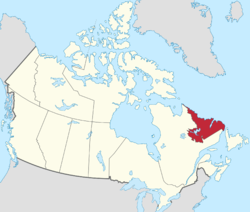 |
| Artist rendition of Giant Beavers, Wikipedia commons |
ARE GIANT BEAVERS STILL AROUND?
Greetings! How are all of you today? Has anything interesting happen this week? Not so much for me, just working and keeping busy. But that in itself is a big job!
Speaking of big, most people have learned in school about the Ice Age and the giant animals that lived during that time. One of the most common animals taught on this subject is the Giant Beaver (Castoroides ohioensis). Imagine that! A beaver the size of a black bear! Typically they grew up to 8.25 feet (2.5meters) in length and weighed 220 pounds (100kg) with front teeth up to 8 inches long! We know without a doubt these animals existed
from their many fossils found in North America. But do they still exist today? Reports of giant beavers have been around for a while. Folklore from several different Canadian tribes have long spoke of giant beavers. There is even a river in the Labrador region that has a native Montagnais-Naskapi name translated as "Giant Beaver River.”
“‘Many old medicine stories talk about giant animals—bats, dinosaurs, beavers, monkeys—which once roamed the earth,’ wrote the late Dene elder George Blondin in his book Yamoria: ‘My grandfather says, as the story goes, that people were really, really scared when they paddled, because at any time they could encounter a beaver…And beavers, they don’t have any natural enemies. They’d come to anything that’s moving on water and if they feel threatened and if they don’t feel comfortable, they’ll capsize the canoes and break the canoes. So the Dene here, the Yellowknives Dene were afraid of them. They were afraid of the beavers so they’d paddle right on the shoreline as quietly as they could go. And they
would tell the children not to make any noise.” Now that doesn’t sound like the beavers of today!
Other stories of giant beaver include those who would tear down cabins. But the question is; Do they still exist today?
Many native peoples of the North do claim they have seen a Giant beaver but usually only once or twice. They say they are now very rare. Other sightings have come from tourists visiting the far north. Is it possible they are still extant? Northern Canada and even northern Maine and the upper peninsula of Michigan are very remote areas. So I believe there is a possibility that these animals could still be around. The question then becomes; wouldn’t we see huge beaver dams and ponds? Well, not necessarily.
“The hind feet of the giant beaver were much larger than in modern beavers, while the hind legs were shorter. The tail
was longer and may have been narrower. However, because soft tissues decay, it is not known whether its tail resembled the tails of modern beavers, and it can only be assumed that its feet were webbed as in modern species. The skull structure of the giant beaver shows that it presumably participated in extended underwater activity, thanks to the ability to take in more oxygen into its lungs. One of the defining characteristics of the giant beaver were their incisors, which differ in size and shape from those of modern beavers. Modern beavers have chisel-like incisor teeth for gnawing on wood, while the teeth of the giant beaver were bigger and broader, and grew to about 15 cm (6 in) long. These incisors were not as efficient at cutting wood; therefore, it is possible that the giant beaver did not construct dams.”2
 |
| Labrador Canada, wikipedia commons |
 |
| Fossil skeleton of Giant Beaver, wikipedia commons |
Whether extinct or extant, these are remarkably designed animals. What a stunning world our ancestors must have lived in! Much more amazing than the story of evolution.
God bless and take care,
Willow Dressel
References:
1https://www.martinezbeavers.org/wordpress/2018/12/07/a-giant-beaver-tale-to-tell/
2https://en.wikipedia.org/wiki/Labrador


No comments:
Post a Comment